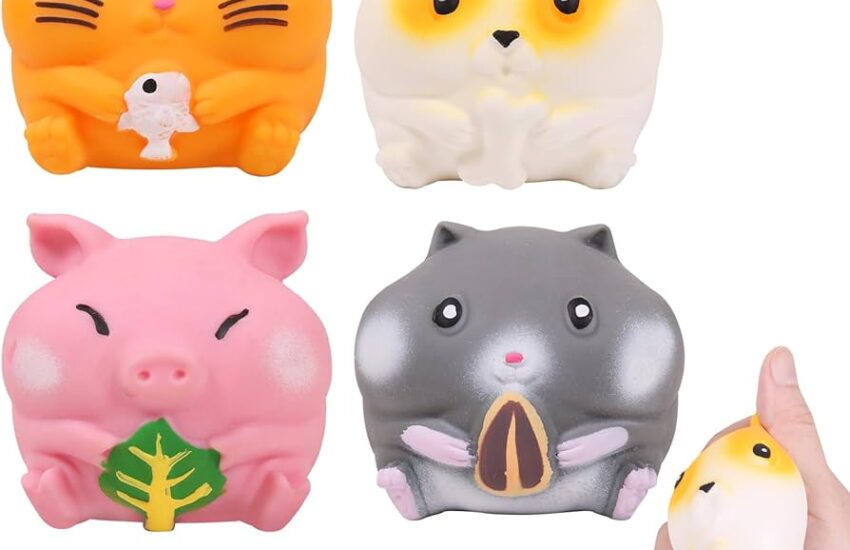Best Hamster Options for Calm Children
When it comes to finding the ideal pet for calm children, hamsters often top the list. These small creatures are not only adorable but also provide an excellent introduction to the responsibilities of pet care. Importantly, they are generally gentle and easy to handle, making them suitable for kids who may need a bit more care and attention in a pet. In this article, we’ll explore the different types of hamsters, their personalities, and tips on how to choose the best one for your child. You will also discover why hamsters make delightful companions and how to ensure your little one has a positive experience with their new furry friend.
One exciting aspect about hamsters is their varied breeds, each with unique characteristics. This diversity gives parents the chance to select the right type of hamster based on their child’s temperament and lifestyle. In addition, having a pet hamster can teach children about responsibility and empathy, crucial traits as they grow. Let’s dive into the details!
Understanding Hamster Breeds
Not all hamsters are created equal; different breeds possess distinct traits, behaviors, and care requirements. Children will benefit from having a pet that matches their energy level and personality. Here are some of the most popular hamster breeds:
- Syrian Hamster: Known for their friendly demeanor, Syrian hamsters are larger and often more interactive than other breeds. They are typically solitary and require a spacious habitat.
- Dwarf Hamster: These smaller hamsters, including the Campbell’s and Roborovski, are energetic and curious, making them great playmates for calm children who enjoy interaction.
- Chinese Hamster: This breed has a unique look and is known to be friendly, though they may be a bit more skittish than their Syrian counterparts. Patience is key in building trust with a Chinese hamster.
What Makes a Good Hamster for Calm Children?
When selecting a hamster, consider the child’s experience with pets and how calm they are around animals. A few specific traits to look for include:
Gentle Temperament
Choose breeds known for their laid-back nature, like Syrian hamsters, which are typically more forgiving of rough handling.
Age and Size
Younger hamsters can be more energetic, while adult hamsters tend to be calmer and more suitable for children who might not handle excessive play well.
Socialization Potential
Some hamsters enjoy interaction and can be socialized easily, which will help your child form a bond with their pet.
Choosing the Right Habitat for Your Hamster
Creating a suitable living environment for a hamster is essential for their health and happiness. The habitat should be spacious, well-ventilated, and secure. Here are tips for setting up the perfect hamster home:
Size and Type of Cage
For Syrian hamsters, opt for a larger cage (at least 24×12 inches) with vertical space for climbing. Dwarf hamsters can thrive in slightly smaller cages, but they also enjoy multi-level habitats.
Bedding and Nesting
Use safe and absorbent bedding like aspen shavings or paper-based products. Ensure that your hamster has nesting material to create a cozy space for themselves.
Toys and Enrichment
Provide various chew toys, tunnels, and exercise wheels to keep your hamster active and entertained. This is especially important for energetic breeds like dwarf hamsters.

Establishing a Caring Routine
Establishing a routine not only helps keep your hamster healthy but also teaches your child responsibility. Here are some key aspects:
Feeding
Provide a balanced diet of high-quality hamster pellets, fresh vegetables, and occasional treats. Teach your child how to measure out food and keep the feeding area clean.
Cleaning the Cage
Regular cage cleaning is essential for hamster hygiene. Involve your child in the cleaning process to give them a sense of ownership and responsibility.
Handling and Interaction
Show your child the right way to handle the hamster—gently and respectfully. Encourage regular interaction to help the hamster become comfortable and friendly.
Benefits of Having a Hamster
Having a hamster can be a rewarding experience for children. Some of the key benefits include:
- Responsibility: Caring for a pet teaches children about commitment and empathy.
- Social Skills: Interacting with a pet can improve communication skills and confidence.
- Stress Relief: Studies have shown that spending time with pets can reduce stress and promote relaxation.
Final Thoughts
Choosing the best hamster for calm children can lead to a fulfilling and educational experience. Hamsters are not only wonderful companions but can also help instill a sense of responsibility and empathy in young pet owners. By understanding the different breeds, setting up a proper habitat, and establishing a caring routine, parents can ensure a happy life for their child’s new furry friend. For more detailed information on raising hamsters, you may find these resources helpful: here and here.
Ultimately, whether you choose a Syrian, dwarf, or Chinese hamster, with the right preparation and understanding, your child can enjoy the company of a calm and loving pet.
